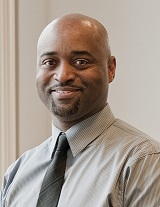 For the past three years, Merritt Healthcare has worked with architects Shepley Bulfinch on a series of ambulatory surgery centers across Connecticut. Shepley Bulfinch architecture team leader Gerard Georges discusses quality, value, and the design process in his work with Merritt Healthcare partners William Mulhall, RN, CASC, and Matt Searles, MBA.
For the past three years, Merritt Healthcare has worked with architects Shepley Bulfinch on a series of ambulatory surgery centers across Connecticut. Shepley Bulfinch architecture team leader Gerard Georges discusses quality, value, and the design process in his work with Merritt Healthcare partners William Mulhall, RN, CASC, and Matt Searles, MBA. The value proposition starts with finding the right building and site. Location is key: rather than being located on a hospital campus, the ASC can be located for optimal patient access and attractive lease terms. Rather than building new, Mr. Georges, Mr. Mulhall and Mr. Searles have taken advantage of available commercial properties, adapting existing structures for an ASC. "We are recycling buildings, extending their life span," says Mr. Georges.
Once a building is selected, Shepley Bulfinch helps Merritt bring the idea of an ASC to fruition. The building is evaluated to determine whether the existing space will work for an ASC, with Gerard and his team testing a series of different layouts to determine the best configuration. "We create 10 to 15 different versions of the plan for the most efficient flow and ways to enrich and enliven the space architecturally," he says. Mr. Mulhall and Mr. Searles run the operational and clinical numbers, and if they align with the proposed plan, the package is presented to the ASC’s physicians and other stakeholders. "We explain the options, benefits and challenges," said Mr. Georges. "Testing so many scenarios in advance lets us quickly address their questions."
Once stakeholders approve a plan, Mr. Georges assembles a project team and prepares bid documents. "When you can, it's smart to pre-select contractors you’ve worked with on ASCs before," says Mr. Georges. "We usually have six or seven contractors bid and the numbers are very competitive."
The feasibility process generally takes one to two months, followed by about three months for design and the completion of construction documents. Construction itself usually takes about six months, but dealing with the unexpected is an inherent challenge when you fit an ASC into an existing building.
"We need to visualize how we can navigate existing structures to fit in the ASC," says Mr. Georges, noting that Merritt's ASC projects to date have included repurposing everything from a roller rink to a supermarket. "Flexibility is essential. Something as simple as an unforeseen pipe in a wall may require adjustments to the plan."
Every project has a bottom line, and ASCs are no exception. Merritt's projects to date, which have ranged from 10,000 to 15,000 square feet, have cost just $170-$180 per square foot.
How can ASCs use design to convey a sense of quality while keeping to a budget? "Developers often shun design because they think it is costly, but that’s not the case. Merritt recognizes that good design sets them apart," said Gerard. "Shepley Bulfinch's approach is simple: define the process so you know what to expect; stick to a tight schedule; and use materials and resources strategically."
“Pay attention to the patient's arrival experience," he added. "Carefully thought-out design of the exterior and patient waiting areas reinforces the center’s brand and sends a message to patients that they will be well cared for."
More Articles on Transactions and Valuation Issues:
20 Surgery Centers Expected to Open in 2014
6 Things to Know About the Current ASC Market
5 Recent Orthopedic-Driven ASC Openings, Plans & Expansions


